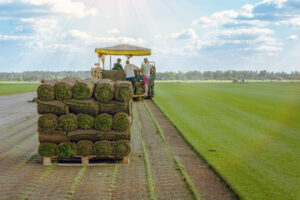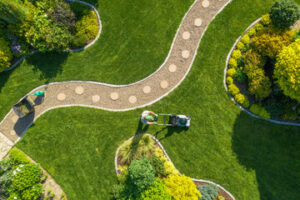If you’re experiencing a recurring light bulb burnout or dim lighting, it may be time to call in Landscape Lighting Repair Orlando. Problems like these don’t always show up as a single outage and often can be attributed to things like voltage fluctuations and poor connections.

Wiring and connections that are not up to par will decay underground and in the weather. This can lead to corroded wires.
Landscape lighting can do so much to enhance your home’s nighttime beauty. It can highlight your favorite tree bark, branches and leaves, architectural features or even the silhouette of a statue or fountain. But when a fixture breaks, it can take away from the enjoyment of your yard’s aesthetics.
Luckily, most of the time a fixture is broken, it can be repaired rather easily. The first step is determining what is wrong. Sometimes it can be as simple as resetting the circuit breaker or replacing a bulb. Other times, however, the issue is more complicated and may require rewiring or replacing parts.
Some issues can be discovered through regular visual inspections. This includes checking for physical damage like cracks and rust, as well as water damage from leaks or condensation. It also includes ensuring that the lights are in the proper position. Over time, some lights can be blocked by plants or other landscaping or may not be pointing in the right direction. This can make your system look dated and can cause the lights to not function properly.
Other problems can be caused by wiring or connections that are not up to outdoor use. These problems are more common in older systems or in systems that were installed without professional help. In these cases, the wires that are buried underground will decay over time and can affect the performance of your lighting system. It is important that you keep up with your maintenance so that these issues are caught quickly and addressed before they worsen. During a professional inspection, the landscape lighting technician will check all of the wiring to ensure it is up to date and that the connections are tight.
Wiring
In some cases, the wiring that powers your landscape lighting may be a culprit in causing a short. When it comes to a wire-related issue, you’ll want to have a professional examine the problem and determine what the cause is. It’s common for wires to corrode over time due to exposure to the elements. They can also get cut by landscapers, irrigation specialists, or outdoor contractors. If a wire has been cut, it should be inspected by a professional and reconnected properly to avoid a potential short circuit.
Many problems with lighting fixtures are caused by environmental factors such as moisture. The best way to prevent these issues is to invest in quality fixtures that are built to withstand the outdoor elements. Water and electricity don’t mix, and it’s important that your fixtures stay dry.
If a light fixture is constantly leaking, a gasket problem could be the culprit. A simple fix for this would be to replace the gasket, which is a rubber O-ring that fits over the fixture and creates a seal to keep out moisture and debris.
Another common issue is that the bulbs in a fixture aren’t lighting up. The first thing to try is replacing the bulb, but if that doesn’t work, then it could be a sign of an electrical problem. If you suspect this is the case, use a digital voltage meter to see if your transformer is providing the correct voltage for the lights you have installed. Each fixture will have specific requirements based on the manufacturers guidelines, so it is crucial that these voltages are maintained. Adding voltage maintenance devices like transformers with internal voltage regulators can help keep your system running at optimal levels.
Timer
Timers are an integral part of landscape lighting systems. They can be programmed to turn your lights on and off at specific times to save energy and prevent overuse. Additionally, they can be used to schedule automatic dusk-to-dawn operation. You can even upgrade to a digital or astronomical timer to enjoy greater control and customization.
If your lights aren’t turning on or going off when they should, it can be frustrating. But before you call a professional, there are a few simple troubleshooting steps you can take to address the problem.
Start by ensuring that the transformer is plugged in and receiving power. A lack of proper voltage to the transformer can result in your outdoor lighting system failing to function properly. Moreover, a faulty transformer can lead to a variety of other issues that can be difficult to diagnose and fix.
Next, it’s a good idea to verify that the timer settings are correct. Incorrect timer settings are a common reason why landscape lights don’t turn on or off at the desired time. Taking the time to check and double-check your timer settings can easily resolve this issue.
Finally, it’s important to regularly clean your landscape lighting fixtures. Removing dirt and debris from your lights will help them last longer. You can use a mild detergent mixed with water to clean your fixtures. For a deeper cleaning, you can also use a power washer.
Landscape lighting systems add a touch of elegance and style to your home. But these beautiful systems can become frustrating when they stop working correctly. By following these simple troubleshooting tips, you can quickly resolve most landscape lighting problems.
GFCI
When a GFCI trips it’s designed to do so in order to protect your landscape lighting system and home from electrical hazards. Rather than attempting to reset the GFCI by removing and replacing the fuse, it’s often more efficient to have the professionals come in and inspect your system. This helps to identify potential problems that can be resolved quickly to prevent a larger issue.
Sometimes, the reason why landscape lighting isn’t working could be as simple as a faulty fixture or wire. Other times, the problem may be something more serious such as a damaged wiring system or transformer. Fixtures can also be a bit tricky to get right. Ideally, they should be positioned in a way that provides an aesthetically pleasing design and proper functionality. If the fixtures are crooked or look out of place, an experienced lighting professional can help you find a new design.
Having the proper landscape lighting system in your outdoor space can enhance your home’s beauty and add value to your property. It’s important to regularly perform maintenance and repairs on your landscape lighting system in order to prevent a number of common issues that can be difficult to fix. By following these tips, you can keep your landscape lighting system running efficiently and looking its best for years to come. Contact an expert landscape lighting contractor to learn more about high-quality products, optimal installation techniques and regular maintenance and repair services that can help you avoid costly replacements in the future. The investment you make in your landscape lighting will pay off for many years to come. Enjoy your beautiful outdoor spaces with peace of mind knowing that your lighting is in top condition.
Bulb
Lighting fixtures are exposed to outdoor elements, and many can be damaged by moisture. This can come from irrigation, rain or snow. Sometimes, this can be addressed with a simple repair, such as cleaning the fixture and removing any dirt or debris from inside. Other times, it may be necessary to replace the bulb.
Homeowners who regularly trim overgrown foliage and use weatherproof bulbs will reduce the number of landscape lighting repair calls they need to make. It is also a good idea to have the system professionally inspected at least once a year to make sure everything is in working order.
Changing out bulbs is a simple task and should be done in the proper manner to ensure that it is safe and effective. If you do this yourself, make sure that you turn off the power before you remove or install a bulb. You will also want to clean off any corrosion on the wire connections and the bulb fixture with emery board or sandpaper, then spray it with contact cleaner.
While the lights in your landscape are a beautiful accent to your outdoor living space, it can be frustrating when they go out. The best way to reduce the amount of landscape lighting repair you need is to work with a reputable landscaping contractor that uses high-quality products and expert installation methods.
In addition to providing safety and security, landscape lighting enhances the beauty of your outdoor living spaces, increases your property value, and promotes energy efficiency. Regular maintenance and upkeep of your landscape lighting will help you enjoy it for years to come.


